Sample information |
|||||||||||||||||||||||||||||||||
| Picture |
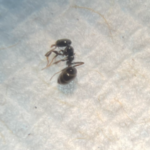
|
||||||||||||||||||||||||||||||||
|---|---|---|---|---|---|---|---|---|---|---|---|---|---|---|---|---|---|---|---|---|---|---|---|---|---|---|---|---|---|---|---|---|---|
| Location | |||||||||||||||||||||||||||||||||
| Collection date | 09/06/2023 | ||||||||||||||||||||||||||||||||
| Captive / Cultivated? | Wild-caught | ||||||||||||||||||||||||||||||||
| Group | Hawaii Community College | ||||||||||||||||||||||||||||||||
| Observations | The black household Ant is an black and brown ant that feeds off of natural sugars and is present in large numbers when feeding off of natural sweet liquids. This Ant can be distinguished by its large bulbous head (Bull like) with small antenna and long yellowish brown legs. The color of the ant is black for the most part with large pincers in its cranial cavity. The thorax of this ant is rather fair and larger by the cranium and smaller near the abdomen. The abdomen is rather big and is slightly larger than its head. The ant belongs in the Hymenoptera order in the Ochetellus Genus. The scientific name of this ant species is Ochetellus Glaber. I captured this specimen in my upstairs attic in Ocean View by adding natural honey unto a wooden bowl and naturally allowing the ants to crawl inside of the bowl.
|
||||||||||||||||||||||||||||||||
| Putative identification | Arthropoda Insecta Hymenoptera | ||||||||||||||||||||||||||||||||
Methods |
|||||||||||||||||||||||||||||||||
| Extraction kit | Edwards Buffer | ||||||||||||||||||||||||||||||||
| DNA extraction location | Whole arthropod | ||||||||||||||||||||||||||||||||
| Single or Duplex PCR | Single Reaction | ||||||||||||||||||||||||||||||||
| Gel electrophoresis system | Edvotek Gel Electrophoresis | ||||||||||||||||||||||||||||||||
| Buffer | TBE | ||||||||||||||||||||||||||||||||
| DNA stain | SYBR Safe | ||||||||||||||||||||||||||||||||
| Gel images |
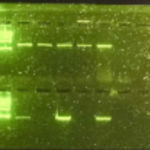
|
||||||||||||||||||||||||||||||||
| Protocol notes | Table 1: Gel Loading Key for CO1 Gel (Well/lane for top gel)
Table 2: Gel Loading Key for 16S rRNA gel (Well/lane for bottom gel)
|
||||||||||||||||||||||||||||||||
Results |
|||||||||||||||||||||||||||||||||
| Wolbachia presence | Yes | ||||||||||||||||||||||||||||||||
| Confidence level | High | ||||||||||||||||||||||||||||||||
| Explanation of confidence level | Well# 2 (Ant sample 1) was positive in the PCR gel. The the 2 positive controls confirmed the result. The gel showed a clear band in all wells in the gel.
|
||||||||||||||||||||||||||||||||
| Wolbachia 16S sequence | |
||||||||||||||||||||||||||||||||
| Arthropod COI sequence | Download AB1
|
||||||||||||||||||||||||||||||||
| Summary | The Hymenoptera was found to be postive for Wolbachia. | ||||||||||||||||||||||||||||||||
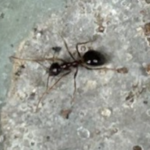 IM P7 #1
IM P7 #1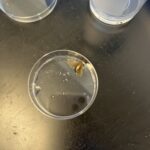 Wolbachia- Moth
Wolbachia- Moth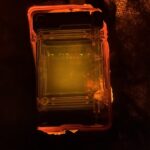 Wolbachia Project
Wolbachia Project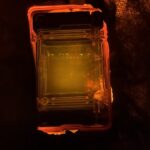 Wolbachia Project
Wolbachia Project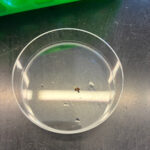 Wolbachia Lab: DNA Extraction
Wolbachia Lab: DNA Extraction